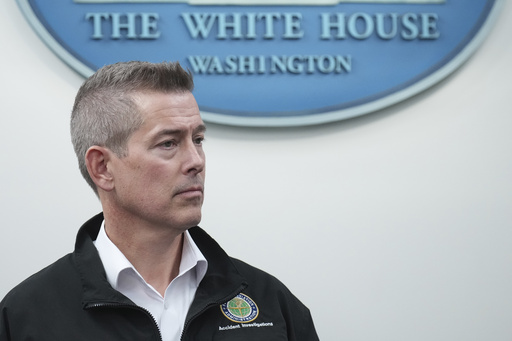In Washington, the administration of President Donald Trump has announced that there have been no terminations of personnel in critical safety roles at the Federal Aviation Administration (FAA) during the recent reduction of the federal workforce. However, claims from the FAA’s union and past employees indicate that some positions that were eliminated were indeed pivotal in providing support to safety inspectors and airport operations.
Approximately 400 employees were released from their roles starting Friday. While the complete details of those dismissed are still emerging, the union representing around 130 of the laid-off workers disclosed that various support positions, including aviation safety assistants, maintenance mechanics, and nautical information specialists, were included in the cuts.
These workers played essential roles in assisting aviation safety inspectors, repairing air traffic control facilities, and maintaining essential electronic maps that pilots utilize during flights. Their responsibilities also included making necessary updates directed by the FAA, particularly following a tragic midair collision in January.
FAA Administrator Sean Duffy clarified over the weekend that no air traffic controllers or essential safety personnel faced layoffs. In a statement on Wednesday, Halee Dobbins, a spokesperson for the Department of Transportation, emphasized that the affected workers were primarily probationary employees, who had been with the FAA for less than two years, constituting less than 1% of the agency’s over 45,000 workforce.
Philip Mann, a former FAA certified technician, explained that the definition of “critical to safety” could vary significantly based on whether individuals have been certified to inspect the equipment in question. Even though the dismissed employees were not directly conducting those inspections, their roles were crucial in supporting this work.
“It’s a stretch, but that is generally how they justify categorizing roles,” Mann noted, adding that the absence of these workers could lead to long-term safety repercussions because necessary work would no longer be accomplished effectively.
This staffing reduction comes at a time when public trust in air travel has noticeably declined since the collision involving a U.S. Army Black Hawk helicopter and an American Airlines passenger jet at Ronald Reagan Washington National Airport. A recent poll revealed that only 64% of U.S. adults now feel that air travel is “very safe” or “somewhat safe,” down from 71% the previous year.
Among those laid off, 18 air traffic control facilities lost maintenance mechanics who handled electronic and infrastructure repairs. Union president David Spero noted that the work on essential systems like radars could now experience setbacks as certified technicians take on additional duties.
“These personnel are integral to the safety infrastructure,” stated Spero. “As their numbers dwindle, it complicates our ability to conduct adequate safety oversight.”
The cuts to nautical aviation specialists will also delay the updating of digital maps used by pilots. Aviation safety assistants, who perform administrative tasks to allow inspectors to focus on critical inspections, were also significantly impacted—26 of these positions were cut, with each generally supporting about ten inspectors. Spero mentioned that the resulting increase in paperwork would likely burden inspectors, leading to longer evaluation processes for aircraft.
“They simply won’t be able to maintain the same level of oversight as before,” he emphasized. Certified technicians may also face increased workloads due to these layoffs, Mann pointed out.
With air traffic controllers already overstretched, and there typically being about three controllers per technician, this staffing crisis adds to ongoing concerns about an already overworked system. The FAA’s workforce challenges have persisted, leading to reports of major airports lacking round-the-clock technician coverage, a departure from prior operational standards.
Spero recounted a recent incident at Chicago O’Hare International Airport, where a temporary radar outage resulted in a significant ground stop due to technicians being unavailable to manage the problem effectively. Additionally, the union has yet to uncover comprehensive details about the other job functions affected among the 400 workers who were let go, some of who were engaged in projects supporting other government agencies.
President Trump’s administration is reportedly enacting sweeping reforms within the first weeks of his second term, including terminating the employment of numerous career agency staff and halting substantial federal grant funds. This initiative aims to fulfill his campaign promises targeting fraud, waste, and abuse within the federal system. The Department of Government Efficiency is spearheading these extensive layoffs.
The rapid firings across various federal departments have taken agency leaders by surprise, sometimes leading to immediate public backlash and calls for staff reinstatement, as seen with the National Nuclear Security Administration. Spero hopes to see restoration of the terminated FAA positions and advocates for a more measured approach in evaluating workforce adjustments to truly assess the implications for aviation safety moving forward.




